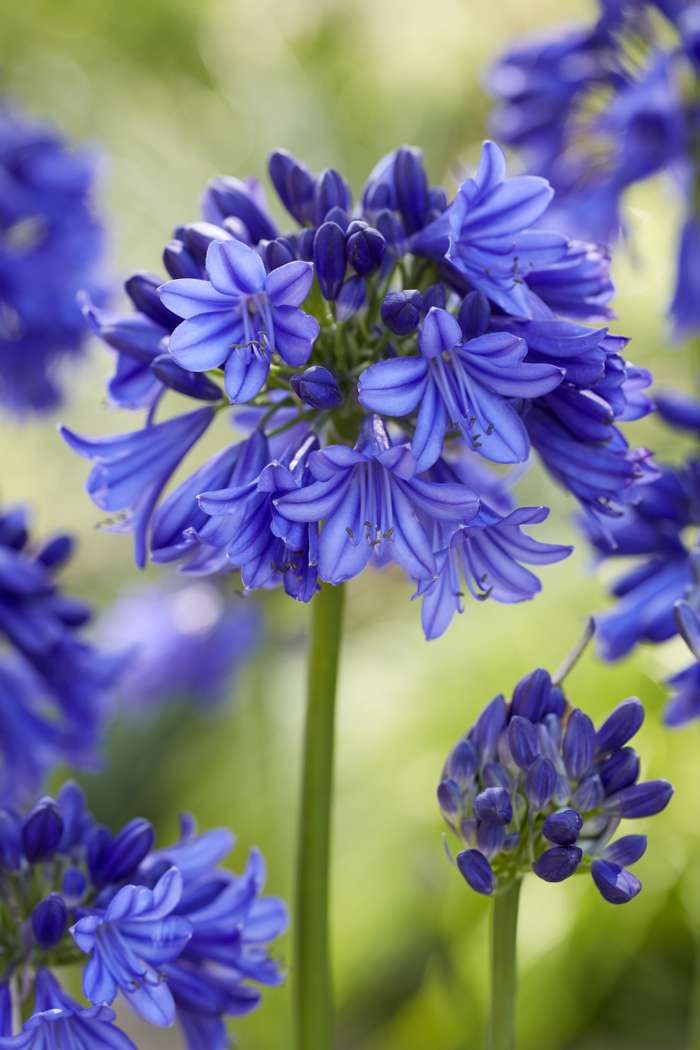Seasonal Agapanthus Care: Planning For Winter Season and Summer season
Seasonal Agapanthus Care: Planning For Winter Season and Summer season
Blog Article
Grasping the Art of Agapanthus Treatment: Important Actions for Healthy Growth and Lively Blossoms
In the realm of horticulture, the farming of agapanthus stands as a gratifying venture for those that seek to nurture these stylish blooming plants. With their striking blossoms and graceful vegetation, agapanthus has captured the focus of gardeners worldwide. Nevertheless, accomplishing ideal growth and vivid blossoms needs a nuanced approach that incorporates various necessary actions. From picking the appropriate range to understanding trimming strategies, the trip in the direction of growing flourishing agapanthus plants is multifaceted and holds the key to unlocking the full potential of these botanical gems.

Picking the Right Agapanthus Selection

When choosing the ideal Agapanthus range for your yard, consider factors such as climate viability, blossom shade, and growth practice. Additionally, think about the environment in your region to ensure the Agapanthus range you select can flourish in your details problems. Recognizing the growth practice of various Agapanthus varieties is vital for correct placement within your yard.
Suitable Planting Conditions
Taking into consideration the optimal environmental requirements is vital for successful Agapanthus cultivation. Agapanthus plants are delicate to chilly temperature levels and ought to be shielded from frost during winter season months.
To make certain healthy growth and lively blooms, plant Agapanthus light bulbs at a deepness of concerning 2-4 inches and room them 8-12 inches apart. Mulching around the base of the plants assists preserve wetness and suppresses weed development.
Watering and Fertilizing Tips
Preserving appropriate dampness levels and supplying vital nutrients are essential elements in the treatment program for Agapanthus plants. When it comes to watering Agapanthus, it is essential to strike a balance. These plants like continually moist dirt but are prone to root rot if overwatered.
Fertilizing Agapanthus is essential for advertising healthy and balanced development and prolific blossoms. Apply a well balanced fertilizer, such as a 10-10-10 formula, in the very early spring as brand-new growth arises. By following these watering and fertilizing suggestions, you can ensure your Agapanthus plants flourish and produce dynamic, resilient blooms.
Pruning Techniques for Agapanthus
Trimming Agapanthus plants at the ideal times and with appropriate techniques is their website critical for maintaining their health and wellness and promoting optimum development and blooming. The optimal time to prune Agapanthus is in late winter months or early spring before new development arises.
For flowered stems, wait till the flowers have actually perished and afterwards trim them back to the base. This not just cleans up the plant's appearance yet also motivates the development of new flower buds. Deadheading spent flowers can likewise redirect the plant's power right into producing even more blooms as opposed to setting seeds. Nevertheless, if you wish to collect seeds for proliferation, leave some blossoms to fully grown and completely dry on the plant.
Remember to utilize clean, sharp tools to make accurate cuts and minimize the reference danger of presenting diseases. Agapanthus. Regular pruning will certainly help maintain your that site Agapanthus looking healthy and cool while making certain a plentiful display of gorgeous blossoms
Handling Typical Parasites and Conditions
After making sure proper trimming strategies for Agapanthus, it is vital to attend to common parasites and diseases that can impact the health and wellness and vitality of these plants. One usual bug that affects Agapanthus is the Agapanthus gall midge.
In addition, Agapanthus plants can suffer from origin rot if they are grown in badly draining pipes dirt. By being vigilant and taking punctual action against diseases and pests, you can aid your Agapanthus plants prosper and produce lively blooms. Agapanthus.

Verdict
Finally, grasping the art of agapanthus care involves choosing the appropriate variety, supplying suitable growing conditions, correct watering and feeding, suitable trimming techniques, and attending to common parasites and conditions. By adhering to these important steps, you can ensure healthy growth and lively flowers for your agapanthus plants. Bear in mind to on a regular basis monitor and keep your plants to advertise their overall health and long life.
To make sure healthy development and lively blooms, plant Agapanthus light bulbs at a deepness of regarding 2-4 inches and room them 8-12 inches apart. By adhering to these watering and fertilizing suggestions, you can guarantee your Agapanthus plants grow and create dynamic, durable blooms.
One common bug that influences Agapanthus is the Agapanthus gall midge. Furthermore, Agapanthus plants can experience from origin rot if they are grown in inadequately draining pipes soil. By adhering to these vital actions, you can ensure healthy development and vibrant blossoms for your agapanthus plants.
Report this page